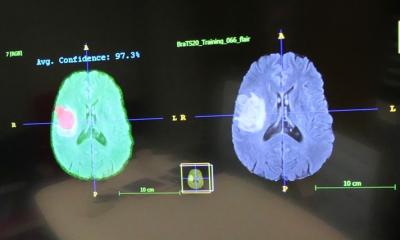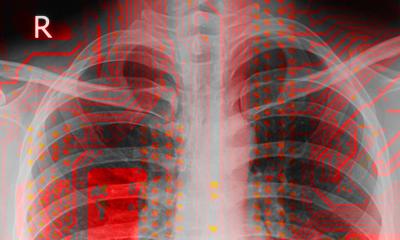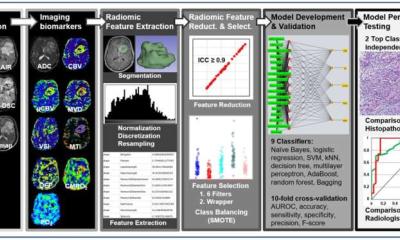Source: Shutterstock/Elnur
Article • AI in imaging
Radiologists must control their own destiny
Radiologists have not ended talk about artificial intelligence and machine learning but, rather than fear for the future of their profession, they themselves must decide how that should be, an eminent expert Dr Woojin Kim warned ECR delegates in Vienna in March.
Report: Mélisande Rouger
Two years in discussion and the hype around artificial intelligence (AI) is far from fading. Interest has never been higher, and the number of people exploring machine learning (ML) is at its peak. Media bombing, notably on advances in computer vision using deep learning in machine v. human imaging challenges, have fed the beast. ‘We’ve read a lot of articles on the topic. Since 2015 machines have been doing better than humans at certain image detection and classification tasks,’ said Woojin Kim, Chief Medical Information Officer for Nuance’s healthcare division in Los Angeles, California, USA.

However, the machine still needs the human, and not only in radiology. Slight street sign modifications have shown that you can completely fool ML algorithms. Twitter notoriously taught the Microsoft AI Chatbot to become a ‘racist asshole’, highlighting a bias problem when it comes to AI.
These failings emphasise the need for proper arbitrage when using this technology, Kim insisted. ‘There are tremendous advances in AI but you really need to incorporate the domain expertise that comes from us into this technology, otherwise you cannot read everything,’ he advised.
Trusting machines
The black box problem is real and size won’t really solve anything. IBM Watson reportedly decided to give contrast in error. With a 29.9 confidence level the machine wanted to administer contrast to a patient on haemodialysis with end-stage renal disease. ‘Some people don’t think this is s a problem, because they say they have the biggest black box. My question to you is, would you trust this machine to protocol all your patients without any human intervention, knowing that it can make mistakes like this? Those are some of the things you want to keep in mind and think about,’ Kim warned.
The world’s smartest leaders have thought of what ML would bring to the world. But history shows that one should be careful with these kinds of predictions. ‘We all remember the X-ray hoax by Lord Kelvin back in the late 1890s,’ he recalled. ‘We can learn a lot from history, also when it comes to AI.’ New technologies can certainly eliminate jobs; they can also create new demand for products and services. ‘For example ATMs do a lot of things that a bank clerk does, but if you look at bank statistics, we have more bank holders today than ever,’ said Kim, adding that humans have this unique ability to create use over value.
Taking control
A lot of these processes are going to be a lot slower than you think, and a lot of these will turn out to be just hype
Woojin Kim
Instead of thinking of what 2025 will look like, radiologists should think of what it should look like, he suggested. ‘Some of the changes are going to be happening fast. Some will use algorithms that can really outdo human performances. But a lot of these processes are going to be a lot slower than you think, and a lot of these will turn out to be just hype.’ In addition, a lot of factors remain beyond anyone’s control, and they will limit the adoption of AI technology in medical imaging. Nonetheless, some people tend to have tunnel vision, which narrows down the scope of potential AI applications in radiology. ‘When you look at all the papers out there, you see everybody focuses on using AI to make a finding. But that is, and I want to challenge all of us here, why don’t we do peer reviews? Because we do so much more than just make findings as radiologists,’ he said.
By 2025, radiologists could really have AI to impact on every aspect of the healthcare value chain, and help clinicians make better decisions. ‘AI could help with scheduling, protocols, workflow, making actual reports, communication follow up and patient safety. I think there’s a tremendous potential for AI in our field and I really want to see AI affecting problems that we have, such as workflow issues in the UK and the USA, or radiologists experiencing tremendous levels of burnout,’ he suggested. Radiology has been traditionally very good at adopting new technologies and incorporating these in daily workflow. ‘I’d like to shift current focus and think of how we can use this methodology to mitigate the negative impact and emphasise the positive potential,’ Kim concluded.
Profile:
Diagnostic radiologist Dr Woojin Kim is Chief Medical Information Officer (CMIO) at Nuance Communications Healthcare Division and a musculoskeletal radiologist in Los Angeles, USA. An entrepreneur, he co-founded and was Director of Innovation at Montage Healthcare Solutions, which was acquired by Nuance in 2016. Other interests: Big data, health IT, mobile health, global health, telemedicine/teleradiology, wearable technology, and machine learning/deep learning.
21.03.2019










